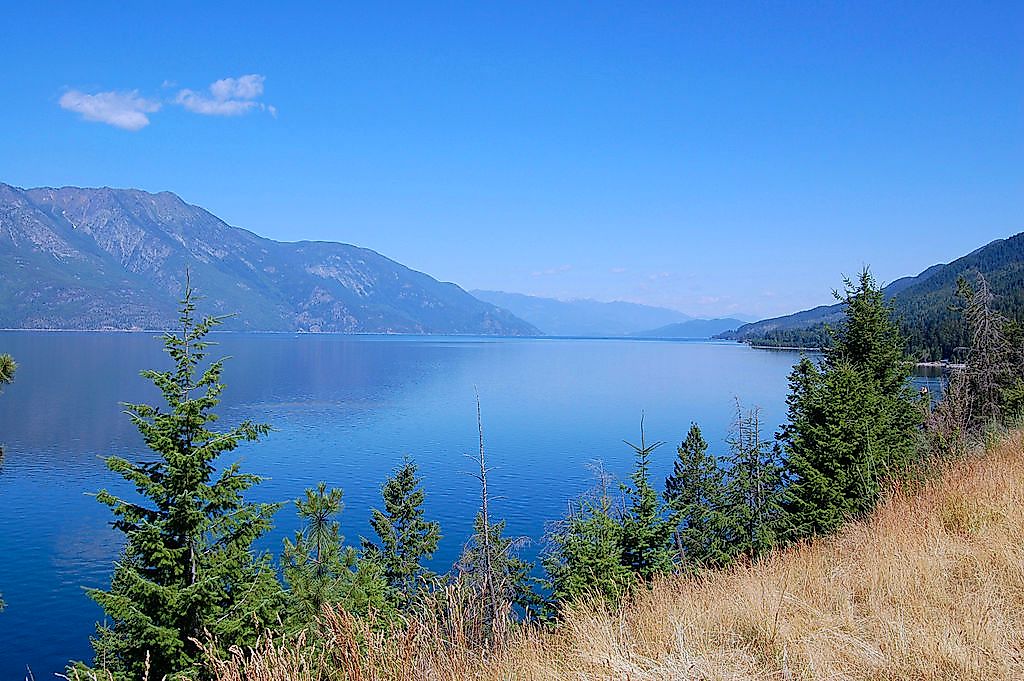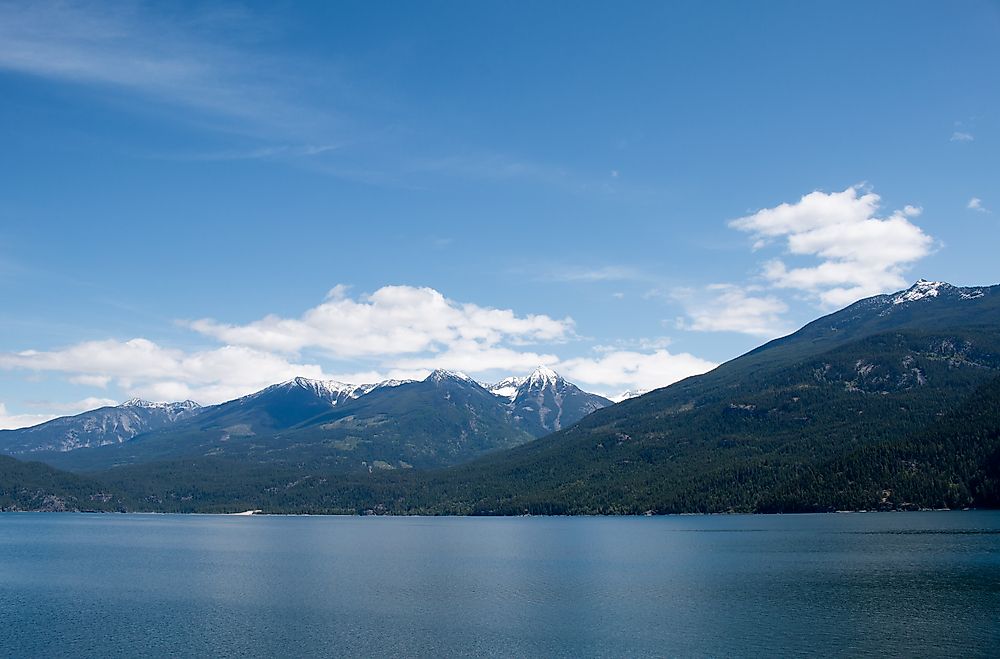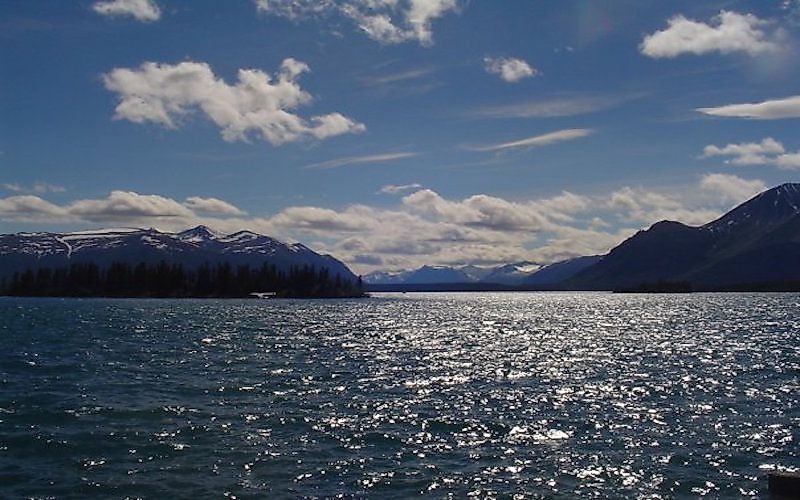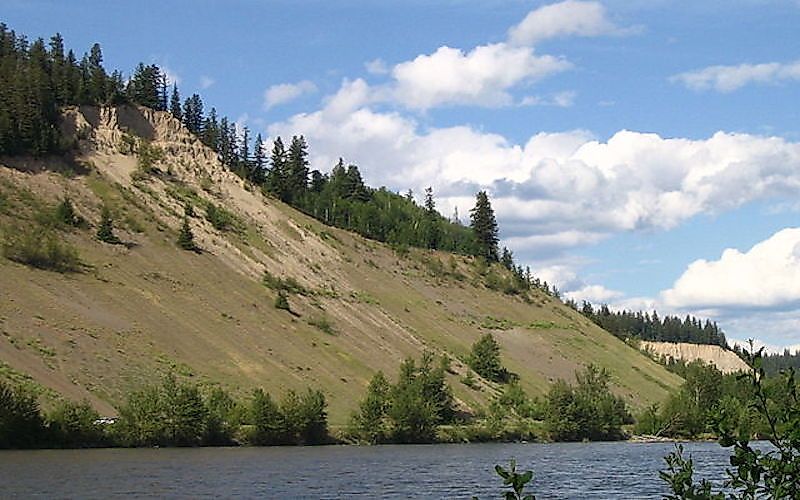The Biggest Lakes in British Columbia

British Columbia is arguably the most diverse province in Canada regarding flora and fauna. Thousands of rivers and lake stretch across the province. The province has over 20,000 lakes stretching over 750,000 kilometers. Lakes are tucked away in the wilderness and on high mountains. Every region in British Columbia provides several lakes and rivers which are important recreational sites. They also provide water, food, and habitat for several mammals, birds, and fish. The British Columbia lakes are important fishing sites for anglers. Five lakes in the province cover an area of over 150 square miles.
5. Kootenay Lake

Kootenay Lake is part of the Kootenay River raised by the Corra Linn Dam. The lake is long, narrow and fjord-like. It is located in the region of Kootenay, British Columbia. Kootenay Lake measures 104 kilometers in length and 3-5 kilometers in width. The lake is above 532 km above the sea level. It was formed through erosion and glaciations that began in thlive late Cretaceous period. The local people used the lake as a seasonal migration and trading route. Kootenay Lake is a habitat for several fish species including rainbow trout, bull trout, and brook trout. Approximately 20,000 people along the lake shore and depend on the lake for their livelihood. Kootenay Lake is crossed by Kootenay Lake ferry which operates between Kootenay Bay and Balfour.
4. Babine Lake
Babine Lake is the longest natural lake in the province. The lake is located in the Town of Burns Lake in central British Columbia. Babine Lake is 95 miles long and about 6 miles wide covering an area of 191 square miles including the islands within the lake. The lake drains into Babine River which is an important tributary of Skeena. Babine Lake is characterized by several provincial parks including Babine Lake, Red Bluff, and Topley Landing Provincial Parks. Babine Portage is located on the west end of Babine Lake. The campsite was used as an entry to the Hudson’s Bay Company post.
3. Atlin Lake

Atlin Lake is located in the northwestern part of British Columbia. It is the largest natural lake in the province covering an area of 300 square miles. The north of the lake is in Yukon where it is called Little Atlin Lake. Most of the lake is in the Atlin District and is considered to be the source of Yukon River. Atlin River drains the lake into Tagish Lake. The name comes from Canadian word A’a Tlein meaning “big lake.” The majority of the population has settled on the eastern shores of the lake while the southern part is in the Atlin Provincial Park and Recreational Area. The lake forms an area of intensive mining and hunting in the district of Atlin.
2. Nechako Reservoir

Nechako Reservoir is a hydropower reservoir formed by the Kenney Dam which made a diversion of the Nechako River. The lake has a surface area of 344 square miles and has a depth of about 1,000 feet. It sits at an altitude of 2,792 feet above the sea level. Its construction in 1952 led to the replacement of 75 families and flooded series of lakes which characterized the upper Nechako Basin. The reservoir is bordered by the Tweedsmuir North and Entiako Provincial Parks. The shores of the lake are home to the Chestlatta Carrier Nation. Nechako Reservoir provides low-cost power to energize the Kitimat smelter.
1. Williston Lake
Williston Lake is located in the northern interior of the province. It was created in 1968 by the W A C Bennett Dam and fills the basin of the Upper Peace River. The lake was named after Ray Gillis Williston, the then Lands Minister. Williston Lake includes three reaches; Peace, Parsnip, and Finlay Reaches. The lake covers an area of 680 square miles making it the largest lake in the province and among the top ten largest reservoirs in the world. The lake is fed by Finlay, Parsnip, and Manson among other rivers. The provincial parks are maintained along the shores of the lake including Muscovite Lakes Provincial Park. Williston Lake’s major tributaries include Finlay River, Ospika River, and Carbon Creek.
Which Are The Biggest Lakes In British Columbia?
| Rank | Lake | Area (including islands) | Altitude |
|---|---|---|---|
| 1 | Williston Lake | 1,761 km2 (680 sq mi) | 671 m (2,201 ft) |
| 2 | Nechako Reservoir | 890 km2 (340 sq mi) | 853 m (2,799 ft) |
| 3 | Atlin Lake | 775 km2 (299 sq mi) | 668 m (2,192 ft) |
| 4 | Babine Lake | 495 km2 (191 sq mi) | 711 m (2,333 ft) |
| 5 | Kootenay Lake | 407 km2 (157 sq mi) | 532 m (1,745 ft) |











